Struggling to read fine print or experiencing eye strain from digital screens? Discover how RX reading glasses offer precision vision correction unlike generic options. Tailored to your unique needs, these prescription eyewear solutions are essential for comfortably addressing presbyopia and reducing eye strain. Explore our comprehensive guide to understand why a custom approach ensures optimal eye health and clarity for all your near tasks. Ready to experience superior visual comfort? Find your perfect pair of RX reading glasses now: https://www.mozaer.com/search?q=rx reading glasses.
【Decoding RX Reading Glasses: What You Need to Know】
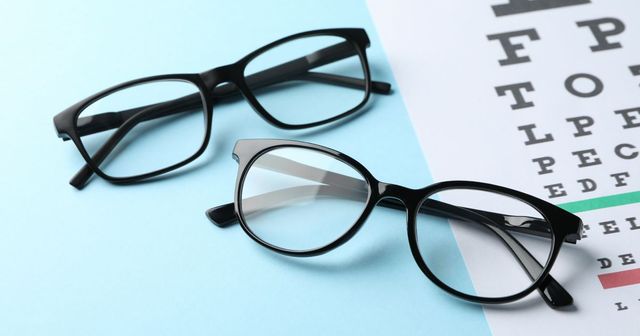
Understanding Prescription Eyewear for Reading
What are RX Reading Glasses? – Tailored Vision Correction for Specific Needs
RX Reading Glasses, also known as prescription reading glasses, are highly specialized eyewear designed to correct specific vision impairments at close distances. Unlike generic, mass-produced over-the-counter (OTC) readers, these custom-made lenses are precisely tailored to an individual’s unique visual requirements. They are prescribed by an optometrist or ophthalmologist following a comprehensive eye examination.
These individualized vision aids are essential for addressing conditions like presbyopia—the age-related loss of the eye’s ability to focus on close objects—or other refractive errors that affect near vision. Each lens in a pair of RX reading glasses is ground to exact specifications, ensuring precise vision correction that directly meets the wearer’s specific needs and improves their ability to read, work on computers, or perform other detailed tasks comfortably.
How RX Reading Glasses Work – Precision for Optimal Vision Correction
The effectiveness of RX reading glasses stems from their precision engineering. Based on your unique prescription, the lens power (measured in diopters) and other optical parameters like pupillary distance (PD) are meticulously incorporated into the lenses. This ensures that the focal length of the lens perfectly matches the distance at which you typically read or perform close-up work.
For individuals with astigmatism, RX reading glasses can also include a cylindrical correction to properly focus light on the retina. This level of customization ensures optimal vision correction, eliminating blurry vision and significantly reducing the eye strain, fatigue, and headaches often associated with poorly corrected or generic magnifying glasses. The exact alignment and customized power deliver crystal-clear vision, making activities requiring near focus effortless and comfortable.
The Indisputable Benefits of Custom Reading Glasses
Enhanced Visual Clarity and Comfort – Superior to Generic Solutions for Eye Health
The primary advantage of custom reading glasses is the dramatically enhanced visual clarity and unparalleled comfort they provide. Unlike generic off-the-shelf readers, which offer a one-size-fits-all magnification, prescription reading spectacles are calibrated to your exact optical needs. This precise tailoring eliminates blurry vision, ensuring that text and fine details appear sharp and distinct.
This superior visual acuity directly translates to immense comfort during prolonged reading sessions or detailed work. Correctly prescribed reading eyewear drastically reduces the common issues of eye strain, visual fatigue, and tension headaches that arise when your eyes struggle to focus. Investing in these personalized vision solutions is a critical step towards safeguarding your long-term eye health and enjoying clear, comfortable vision in 2025. For a wide selection of reading solutions designed for clarity and comfort, explore various options that cater to precise optical requirements. Find your next pair of prescription reading glasses here to alleviate eye strain and experience superior visual comfort.
Supporting Long-Term Optical Care – Minimizing Strain and Improving Quality of Life
Beyond immediate comfort and clarity, RX reading glasses play a pivotal role in supporting comprehensive long-term optical care. By providing the exact level of vision correction needed, they prevent the chronic over-exertion of your eye muscles. This proactive approach minimizes accumulated eye strain and significantly reduces the risk of accelerating certain progressive vision problems.
Properly fitted prescription reading eyewear ensures your eyes work efficiently, contributing to sustained vision health and preventing unnecessary ocular fatigue. This investment in preventative eye care translates directly into an improved quality of life. Daily activities such as reading, using digital devices, or engaging in hobbies become enjoyable and free from discomfort, allowing you to maintain your visual well-being and continue performing at your best well into 2025 and beyond.
【RX Reading Glasses vs. Over-the-Counter: A Critical Comparison】

Key Differences and Performance Metrics in Vision Correction
Accuracy and Prescription Eyewear – Why a Tailored Prescription Matters
When evaluating rx reading glasses versus generic over-the-counter readers, the most significant distinction lies in their accuracy and the fundamental approach to vision correction. Prescription eyewear, by its very definition, is custom-made based on an individual’s unique eye examination results. An optometrist or ophthalmologist meticulously measures your specific refractive errors, including spherical power (for farsightedness or nearsightedness), cylinder power (for astigmatism), and axis, along with your pupillary distance (PD). This data allows for the creation of lenses with a tailored prescription that precisely directs light onto your retina, ensuring optimal clarity and focus.
In stark contrast, off-the-shelf reading glasses offer a generalized, symmetrical magnification power. They assume both eyes have the same strength and no astigmatism, which is rarely the case for most adults needing reading assistance. This lack of customization means that while OTC readers might provide some magnification, they cannot offer the precise vision correction needed for true optical comfort and health. For activities demanding crisp, clear near vision, such as reading fine print or detailed hobby work, accuracy is paramount.
Personalized Fit and Eye Health Implications – Mitigating Digital Eye Strain
Beyond optical accuracy, a personalized fit is a crucial performance metric where rx reading glasses demonstrably outperform their generic counterparts, particularly concerning eye health implications and mitigating digital eye strain. Prescription reading glasses are not only tailored in lens power but also in their physical fit to your face. This includes frame size, bridge fit, temple length, and proper optical center alignment with your pupils. A well-fitted pair ensures the lenses are positioned correctly in front of your eyes, preventing distortions and maintaining consistent visual performance.
Improperly fitted over-the-counter readers can lead to myriad issues. If the optical centers of the lenses don’t align with your pupils, you may experience prismatic effects, causing visual discomfort, blurriness, and increased eye strain. This is especially problematic with prolonged use of digital devices, where sustained focus on screens can already contribute to digital eye strain. RX reading glasses can also incorporate specialized coatings, such as anti-reflective or blue light filters, further enhancing comfort and protecting your eyes from the unique challenges of modern screens in 2025, thereby proactively improving your visual comfort and long-term optical care. For truly custom-fit reading glasses designed to reduce digital eye strain and enhance comfort, you’ll find solutions precisely tailored to your unique visual needs. Discover the perfect personalized reading eyewear for your digital life and experience a noticeable difference.
When to Choose Your Optical Care Path
The Case for Professional Optometrist Consultation – Securing the Right Reading Glasses Strength
Deciding between RX reading glasses and off-the-shelf options often boils down to a question of comprehensive optical care and long-term eye well-being. The unequivocal recommendation for anyone experiencing difficulty with near vision is to undergo a professional optometrist consultation. A thorough eye examination conducted by an eye care professional goes far beyond merely determining reading glasses strength. They assess your overall eye health, check for underlying conditions like glaucoma, cataracts, or diabetic retinopathy, and precisely measure your refractive error, including astigmatism, which over-the-counter options cannot correct.
This comprehensive assessment is essential for securing the right reading glasses strength and ensuring your prescription eyewear provides optimal vision correction without causing harm or exacerbating existing issues. An optometrist can also recommend specialized lenses, such as progressive addition lenses (PALs) or task-specific designs, if your lifestyle demands it. Investing in this professional guidance prevents the guesswork associated with self-diagnosing your vision needs and offers peace of mind that your reading glasses are truly beneficial for your eyes.
Limitations of Off-the-Shelf Reading Glasses – A Short-Term, Non-Custom Solution
While off-the-shelf reading glasses (sometimes referred to as generic magnifying glasses or OTC readers) offer convenience and affordability, it’s crucial to understand their inherent limitations. They are fundamentally a short-term, non-custom solution for mild presbyopia, designed for occasional use. These ready-made magnifiers come in pre-determined strengths (e.g., +1.00, +1.50, +2.00 diopters) and do not account for individual differences in pupillary distance, astigmatism, or differing prescriptions between eyes. This “one-size-fits-all” approach often leads to compromise.
Using non-custom reading glasses that are not perfectly suited to your eyes can result in persistent eye strain, headaches, fatigue, and even dizziness. If your vision issues are more complex than simple presbyopia, or if you have astigmatism, over-the-counter readers will not provide adequate vision correction and may even worsen symptoms. They are not a substitute for a professional eye exam and should only be considered a temporary convenience for specific, non-intensive tasks. For anyone seeking precise, comfortable, and healthy vision correction for reading and near work, especially for extended periods in 2025, the custom approach of rx reading glasses is the superior choice for comprehensive optical care. Explore the extensive range of custom rx reading glasses designed for superior visual performance and comfort. Find your perfectly tailored rx reading glasses here to ensure your long-term eye health and clarity.
【Securing Your Prescription: The Foundation of Optimal Reading Glasses】
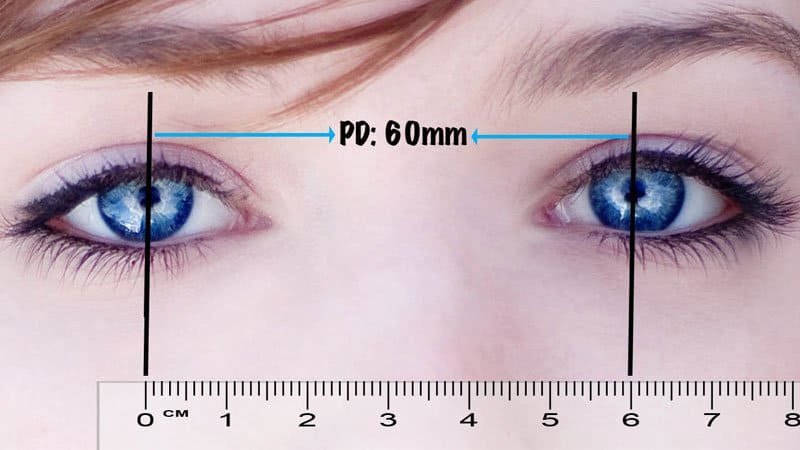
The Imperative of a Comprehensive Eye Exam
Do I Need an Eye Exam for Reading Glasses? – Identifying Presbyopia Symptoms
Many individuals wonder, “Do I really need an eye exam for reading glasses?” The answer, unequivocally, is yes. As we age, typically starting in our early to mid-40s, the natural lens inside our eye stiffens, losing its flexibility to focus on close-up objects. This common age-related condition is called presbyopia. The presbyopia symptoms are often subtle at first but become progressively more noticeable. You might find yourself holding books or menus further away, experiencing near vision blurry, or having difficulty reading fine print. Other indicators include eye fatigue or headaches after prolonged near work.
While these vision changes strongly suggest the need for reading assistance, only a professional eye examination can accurately determine the precise degree of vision correction required and rule out other, potentially more serious, eye conditions. An optometrist or ophthalmologist will assess your overall eye health, check for underlying issues, and measure your specific refractive errors. This comprehensive approach ensures that your chosen reading glasses are not only effective but also safe for your long-term eye health in 2025.
Understanding Your Reading Glass Prescriptions – Decoding the Numbers for Vision Correction
Once you’ve had a professional eye exam, you’ll receive a reading glass prescription – a series of vision correction numbers that precisely define your needs. Decoding prescription sheets can seem daunting, but understanding the key terms is straightforward. The primary strength of your reading glasses is indicated by the “Sphere” (SPH) value, measured in diopters (D), which will usually be a positive number (e.g., +1.50 D). This spherical power corrects for farsightedness.
Crucially for rx reading glasses, the prescription also accounts for astigmatism, if present. This is indicated by “Cylinder” (CYL), also in diopters, and “Axis” (AX), a degree value from 1 to 180. These numbers ensure light focuses properly onto your retina, even if your cornea isn’t perfectly round. Finally, the “Add Power” (ADD) specifies the additional magnifying power needed for near vision tasks, typically the same for both eyes. Understanding these precise vision correction numbers is vital, as they form the blueprint for your tailored prescription eyewear, guaranteeing optimal clarity and comfort.
Mastering Pupillary Distance (PD) Measurement
DIY vs. Professional Pupillary Distance Measurement for Reading Glasses – Ensuring Accuracy
The pupillary distance measurement (PD) is a critical factor in crafting effective reading glasses, particularly custom reading glasses. PD refers to the distance between the centers of your pupils. This measurement ensures that the optical center of each lens in your prescription eyewear aligns perfectly with the center of your pupils, allowing light to pass directly through the clearest part of the lens. When considering DIY vs. professional pupillary distance measurement for reading glasses, both options exist, but with varying degrees of accuracy.
Professional PD measurement, typically performed by an eye care specialist or optical dispenser, uses precise instruments for the most reliable result. This level of accuracy is paramount for rx reading glasses. While DIY PD measurement using a ruler and a mirror is possible and widely practiced for convenience, it inherently carries a risk of error. Slight inaccuracies in PD measurement can lead to discomfort or reduced lens effectiveness. For truly custom reading glasses benefits and long-term visual comfort, especially with digital screens, ensuring accuracy through professional means is strongly recommended.
Impact of PD on Lens Effectiveness – Crucial for Custom Reading Glasses Benefits
The impact of PD on lens effectiveness cannot be overstated. An accurate pupillary distance ensures that the optical center of each lens aligns perfectly with your pupils. When this alignment is correct, light travels directly through the most optically precise part of the lens, providing clear vision and minimizing distortion. Conversely, an incorrect PD — even by a few millimeters — can lead to significant problems, undermining the very benefits of custom reading glasses.
If the optical centers are misaligned, your eyes are forced to look through a different part of the lens, creating a prismatic effect. This can cause visual discomfort, blurriness, eye strain, and even headaches or dizziness, especially during prolonged reading or digital device use in 2025. For rx reading glasses, where precise vision correction is the goal, accurate PD is crucial for custom reading glasses benefits like optimal clarity and freedom from strain. Investing in a precise PD measurement ensures that your tailored reading glasses provide the crisp, comfortable vision you need. To discover how precise PD measurement enhances the comfort and effectiveness of your reading experience, and to explore custom solutions for optimal eye health, visit: Enhance Your Visual Comfort with Accurate Rx Reading Glasses.
For those seeking custom vision solutions, explore the full range of rx reading glasses designed for precision and comfort.
【Advanced Lenses: Tailoring Your RX Reading Glasses Experience】
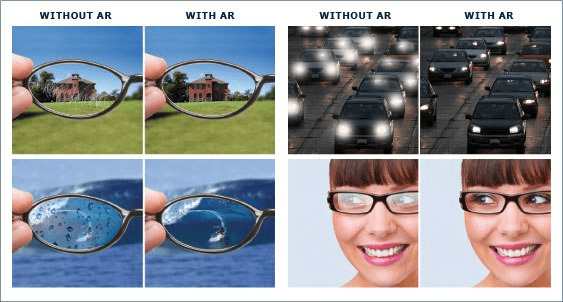
Choosing the right lenses is as critical as obtaining an accurate prescription for your rx reading glasses. The lens type and coatings dramatically influence your visual comfort, clarity, and overall eye health. In 2025, advanced lens technologies offer a range of sophisticated options, allowing for a truly tailored eyewear experience. Understanding these choices empowers you to select reading glasses that perfectly match your visual needs and lifestyle.
Exploring Types of Reading Glass Lenses for Varied Needs
When selecting reading glasses, the primary decision often revolves around the lens design. Different lens types are engineered to address specific visual requirements and daily activities, ensuring optimal clarity for various reading tasks.
Single Vision Reading Glasses – Dedicated Clarity for Close Work
Single vision reading glasses are the most straightforward and common type of prescription eyewear for presbyopia. These lenses feature a single, uniform magnification power across the entire lens surface. Their design provides dedicated clarity specifically for close work, such as reading a book, using a smartphone, or engaging in detailed hobbies.
The primary benefit of single vision lenses is their simplicity and the wide, unobstructed field of view they offer at a specific reading distance. This makes them ideal for individuals who primarily need vision correction for near tasks and are comfortable taking their glasses on and off when shifting focus between near and far objects. For many, these simple reading glasses are an effective and economical solution for their near vision needs.
Prescription Reading Glasses vs. Progressive Lenses – Seamless Vision Zones for All Distances
The choice between prescription reading glasses (which typically implies single vision for near tasks) and progressive lenses hinges on your desire for seamless vision across multiple distances. Prescription reading glasses are designed solely for near vision, providing sharp focus for reading and other close-up activities. However, you’ll need to remove them or look over them to see distant objects clearly.
Progressive lenses, also known as no-line bifocals, offer a revolutionary solution by incorporating multiple vision zones into a single lens without any visible lines. The top portion is for distance vision, the middle provides an intermediate zone for computer work or dashboard viewing, and the bottom offers near vision for reading. This seamless transition allows for clear vision at all distances, making them incredibly convenient for continuous wear throughout the day. While progressive lenses may require a short adaptation period, their ability to provide uninterrupted clarity for a variety of daily tasks makes them a superior eyewear option for many seeking comprehensive vision correction.
Essential Lens Coatings for Enhanced Eye Health
Beyond the lens type, various lens coatings can significantly enhance the performance, durability, and eye health benefits of your rx reading glasses. These treatments are designed to address common visual challenges encountered in daily life.
Blue Light Filtering Reading Glasses – Combating Digital Eye Strain Solutions
In our increasingly digital world, blue light filtering reading glasses have become an essential solution for combating digital eye strain. Digital screens from computers, tablets, and smartphones emit a significant amount of high-energy blue light. Prolonged exposure to this light can lead to eye fatigue, dry eyes, headaches, and even disrupted sleep patterns.
Blue light filtering lenses work by absorbing or reflecting a portion of this potentially harmful blue light before it reaches your eyes. This protective coating helps reduce visual discomfort during extended screen time, allowing for more comfortable and sustained digital device use in 2025. Opting for reading glasses with blue light filter can provide significant relief from digital eye strain and contribute to better ocular health.
Anti-Glare Coating for Reading Glasses – Reducing Reflections and Improving Clarity
Anti-glare coating (also known as Anti-Reflective or AR coating) is a vital addition to any rx reading glasses, specifically designed for reducing reflections and improving clarity. Without this coating, up to 10% of the light that hits your lenses is reflected, creating distracting glare and reducing the amount of light that actually reaches your eyes. This can lead to eye strain, especially when reading under bright lights or in front of screens.
An anti-glare coating virtually eliminates these reflections from both the front and back surfaces of your lenses. The benefits are immediate: crisper vision, reduced eye fatigue, and a more comfortable reading experience. Additionally, AR coating makes your glasses appear nearly invisible, enhancing aesthetics by allowing others to see your eyes more clearly without distracting reflections. This lens treatment is crucial for optimal visual performance and comfort.
High-Index and Trivex Lenses – Thinner, Lighter, and More Durable Prescription Eyewear Options
For those with higher prescriptions or those seeking the ultimate in comfort and aesthetics, High-Index and Trivex lenses represent the pinnacle of lens material technology. High-index lenses are engineered to bend light more efficiently, meaning they can be made much thinner and lighter than standard plastic lenses, even for strong magnification powers. This results in sleeker eyewear that is more comfortable to wear and significantly enhances the appearance of your rx reading glasses.
Trivex lenses, on the other hand, are renowned for their superior impact resistance and exceptional optical clarity. Developed originally for military applications, Trivex is one of the safest and most durable lens materials available, making them an excellent choice for active individuals or children. While slightly thicker than the highest high-index options, they remain remarkably lightweight and provide crystal-clear vision. Both high-index and Trivex lenses offer premium prescription eyewear options, delivering enhanced durability, comfort, and visual performance for your tailored reading glasses. For a deeper dive into advanced lens materials and to find thin, light, and durable options for your prescription reading glasses, explore a wide selection of rx reading glasses at High-Quality Rx Reading Glasses.
【Purchasing Your RX Reading Glasses: Options and Cost】
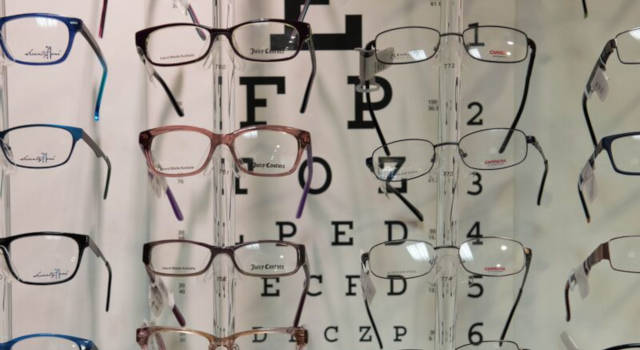
After understanding the intricate details of rx reading glasses and their advanced lens technologies, the next crucial step is acquiring them. This section navigates the diverse purchasing options available in 2025, from convenient online retailers to personalized traditional optical care stores, and explores the cost factors influencing your prescription eyewear investment. Making an informed choice ensures you get the ideal reading glasses that meet your visual needs and budget.
Where to Acquire Your Custom Reading Glasses
When it comes to purchasing your custom reading glasses, consumers in 2025 have more choices than ever. Each acquisition channel offers distinct advantages, catering to different preferences for service, convenience, and price. Understanding these avenues is key to securing your perfect prescription vision aid.
Where to Get RX Reading Glasses Online? – Convenience and Value from Online Retailers
For many, purchasing RX reading glasses online has become the preferred method due to unparalleled convenience and often superior value. Online retailers provide a vast selection of prescription eyewear that can be browsed and purchased from the comfort of your home, 24/7. This digital accessibility means you can compare frame styles, lens options, and pricing across numerous eyewear brands with ease.
The primary appeal lies in competitive pricing, often lower than brick-and-mortar stores due to reduced overheads. Many online platforms offer virtual try-on tools and detailed sizing guides, helping you visualize how frames will look. You’ll need an up-to-date prescription and your Pupillary Distance (PD) measurement to ensure accuracy. For a broad selection of online rx reading glasses offering both value and convenience, exploring established digital storefronts can simplify your purchasing journey and help you find the perfect pair from anywhere. online rx reading glasses.
Traditional Optical Care Stores – Personalized Service and Expert Fitting
Conversely, traditional optical care stores continue to be a vital option for acquiring custom reading glasses, especially for those who prioritize personalized service and expert fitting. These local eyewear shops offer an in-person consultation with trained optometrists or optical dispensers. This direct interaction allows for precise measurements, professional advice on frame selection that complements your facial features, and immediate frame adjustments for optimal comfort and fit.
The benefit of a brick-and-mortar store is the ability to physically try on various reading glasses frames and receive immediate feedback. They can also offer immediate support for any fitting issues or minor repairs, ensuring your prescription vision correction is perfectly tailored. While the cost might sometimes be higher than online options, the comprehensive service and hands-on support provided by traditional optical care professionals can be invaluable, particularly for complex prescriptions or first-time eyeglass wearers.
Navigating the Cost of RX Reading Glasses
Understanding the cost of RX reading glasses involves more than just looking at a price tag. It’s an investment in your eye health and visual comfort. Several factors influence price and quality, making smart commercial investigation essential to maximize your value.
How Much Do RX Reading Glasses Cost? – Factors Influencing Price and Quality
The cost of RX reading glasses can vary significantly, typically ranging from $50 to $500 or more in 2025, depending on several key factors influencing price and quality. Your prescription strength is a major determinant; higher or more complex prescriptions may require specialized lens manufacturing, impacting the final price. The lens material also plays a crucial role: basic plastic lenses are economical, while polycarbonate, high-index, or Trivex lenses (known for being thinner, lighter, and more durable) will increase the investment.
Furthermore, essential lens coatings like anti-glare, blue light filter, and scratch resistance add to the overall cost but significantly enhance visual performance and lens durability. The choice between single vision reading glasses and progressive lenses also affects the budget, with progressive lenses being more expensive due to their seamless vision zones. Lastly, the frame material, brand, and where you choose to purchase your prescription eyewear (online vs. traditional optical lab) all contribute to the final expenditure. A designer eyeglass frame from a premium optical lab will naturally command a higher price.
Maximizing Value: Discounts and Return Policies – Smart Commercial Investigation for Prescription Eyewear
To maximize value when purchasing your prescription eyewear, a smart commercial investigation into discounts and return policies is highly recommended. Begin by checking your vision insurance benefits, as many plans offer significant coverage for rx reading glasses. Additionally, utilize Flexible Spending Accounts (FSA) or Health Savings Accounts (HSA) if available, as these allow you to use pre-tax dollars for eligible medical expenses, including eyewear.
Look for promotional offers and seasonal discounts from online retailers and traditional optical stores. Many providers offer bundled packages that include frames, lenses, and coatings at a reduced overall cost. Crucially, always review the return policies and warranty information before making a purchase. A robust satisfaction guarantee or warranty on your reading glasses provides peace of mind, especially for prescription items where initial adaptation might be necessary. Ensuring access to reliable customer service is also vital for addressing any concerns post-purchase. To find rx reading glasses that balance quality with value, exploring options with clear policies and good support is key. For a comprehensive selection of rx reading glasses designed to meet diverse visual needs and budgets, visit rx reading glasses.
【What Are Rx Reading Glasses and Why Do You Need Them?】
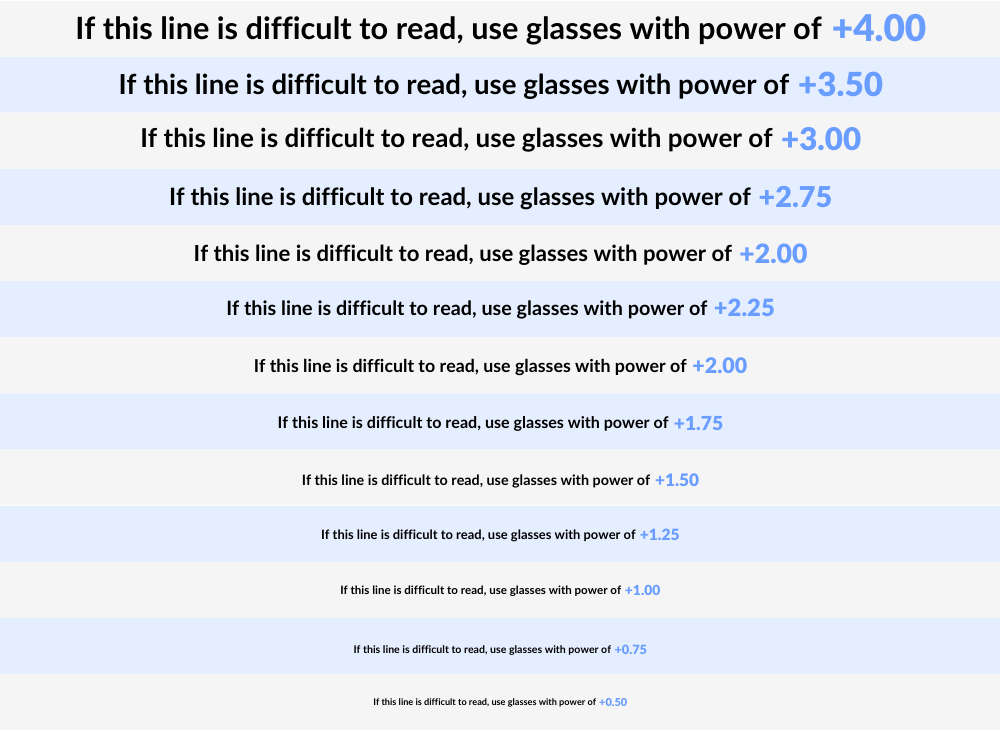
Having explored the diverse purchasing avenues and cost implications of rx reading glasses, let’s now delve into the fundamental question: what exactly are these specialized vision aids, and why might they be indispensable for your eye health and daily comfort? This section clarifies the distinctions between different types of reading eyewear and highlights the critical signs indicating you might need a customized prescription in 2025.
Distinguishing Prescription vs. Non-Prescription Reading Glasses
Understanding the fundamental difference between prescription reading glasses and their over-the-counter counterparts is crucial for making informed eye care decisions. While both serve to enhance near vision, their underlying optical design and corrective capabilities vary significantly.
How do non-prescription reading glasses work?
Non-prescription reading glasses, often referred to as magnifiers or “readers,” function by providing a uniform level of magnification across both lenses. Available in various fixed magnification powers (e.g., +1.00, +2.00 diopters), these spherical lenses simply enlarge text and objects at close range. They are designed for convenience, easily purchased at drugstores, supermarkets, and online, making them a readily accessible vision enhancement tool for individuals experiencing mild presbyopia. Their simplicity means they apply the same magnifying power to both eyes, regardless of individual visual needs.
Why “cheaters” aren’t always enough for Vision Correction.
While over-the-counter reading glasses (colloquially known as “cheaters”) offer a quick fix for blurred near vision, they are rarely a comprehensive solution for precise vision correction. These ready-made readers lack customization, meaning they cannot correct for common refractive errors like astigmatism, nor can they accommodate different prescription strengths between your two eyes (anisometropia). Relying solely on non-prescription magnifiers when a more specific prescription is needed can lead to persistent eye strain, fatigue, headaches, and even worsening visual discomfort over time. They are a generic vision aid, not a tailored optical solution.
How do non-prescription reading glasses work?
Beyond simple magnification, the generic nature of non-prescription reading glasses means they are not tailored to your unique ocular anatomy. Crucially, they do not account for your individual pupillary distance (PD) or the precise optical center of your eyes. When the optical center of the lens doesn’t align with your pupils, it can induce prismatic effect, causing your eyes to work harder to converge, leading to discomfort and visual distortion. This lack of personalization is why over-the-counter options can feel “off” or inadequate compared to rx reading glasses that are precisely crafted to your visual axis for optimal clarity and comfort.
Recognizing the Signs You Need Reading Glasses (Presbyopia)
The need for reading glasses often emerges as a natural part of the aging process, primarily due to a condition called presbyopia. Recognizing the early signs is key to maintaining your visual comfort and productivity.
Common symptoms of presbyopia affecting near vision.
Presbyopia is a natural, age-related hardening of the eye's natural lens, making it less flexible and unable to focus light effectively on the retina at close range. As early as your late 30s or early 40s in 2025, you might begin to notice several tell-tale symptoms. These include needing to hold reading material farther away to see it clearly, experiencing blurred near vision when trying to read small print, eye fatigue or tired eyes after short periods of close-up work, and even developing headaches from the sustained effort to focus. Many find they require significantly more light to read comfortably.
Importance of an eye exam for presbyopia after age 40.
If you are over 40 and experiencing any of the symptoms mentioned, scheduling a comprehensive eye exam with an optometrist or ophthalmologist is paramount. A professional eye examination not only accurately diagnoses presbyopia and determines the correct prescription strength but also serves a vital preventative role. It allows the eye care professional to rule out or detect other serious eye conditions such as glaucoma, cataracts, macular degeneration, or diabetic retinopathy, which can mimic or exacerbate near vision problems. Regular eye health checks are essential for long-term visual well-being.
Signs you need reading glasses.
Beyond age, specific daily challenges are strong indicators that you likely need prescription reading glasses. If you find yourself constantly squinting to read your phone, a menu, or a book, or if fine print on product labels seems impossibly blurry, it’s a clear sign. Experiencing eye strain, fatigue, or even dizziness when shifting focus from distant objects to near ones, or needing increasingly brighter light for close tasks, all point towards the onset of presbyopia and the need for magnification or vision correction. These symptoms collectively signal that your natural focusing ability for near vision is diminishing.
The Benefits of Tailored Prescription Eyewear
Opting for tailored prescription eyewear — specifically rx reading glasses — offers a multitude of advantages over generic over-the-counter options. These customized lenses are designed to provide optimal visual performance and comfort.
Improved visual clarity and reduced eye strain.
The primary benefit of rx reading glasses is the precise vision correction they offer. Unlike over-the-counter readers, prescription lenses are meticulously crafted to match your exact spherical, cylindrical, and axis measurements for each eye. This means every part of the lens is optimized to correct your specific refractive error, resulting in superior visual clarity for all close-up tasks, whether it’s reading a book, working on a computer, or engaging in hobbies like knitting or crafting. This precision also drastically reduces eye strain, fatigue, and associated headaches, allowing for extended periods of comfortable near vision work.
Addressing astigmatism with reading glasses for precise Vision Correction.
A significant advantage of prescription reading glasses is their ability to correct astigmatism concurrently with presbyopia. Astigmatism causes blurred or distorted vision at all distances due to an irregularly shaped cornea or lens. While non-prescription readers only offer basic magnification, rx reading glasses incorporate a specific cylindrical power and axis to neutralize your astigmatism. This comprehensive approach ensures truly sharp vision and eliminates the eye strain and headaches that often accompany uncorrected astigmatism, making reading and other near activities much more enjoyable and efficient.
Do I need prescription reading glasses?
If you find over-the-counter readers cause discomfort, persistent blurred vision, or headaches, or if a comprehensive eye exam reveals you have astigmatism, significant refractive errors, or different prescription strengths required for each eye, then prescription reading glasses are highly recommended. They are essential for optimal visual comfort and long-term eye health, providing customized correction that generic readers simply cannot. For those seeking precision, comfort, and comprehensive vision correction in their reading glasses, exploring rx reading glasses is the next logical step. These prescription vision aids are designed to perfectly align with your unique visual needs, ensuring every word and detail is crisp and clear, preventing eye fatigue and enhancing your quality of life. rx reading glasses.
【Decoding Your Prescription: The Language of Rx Reading Glasses】
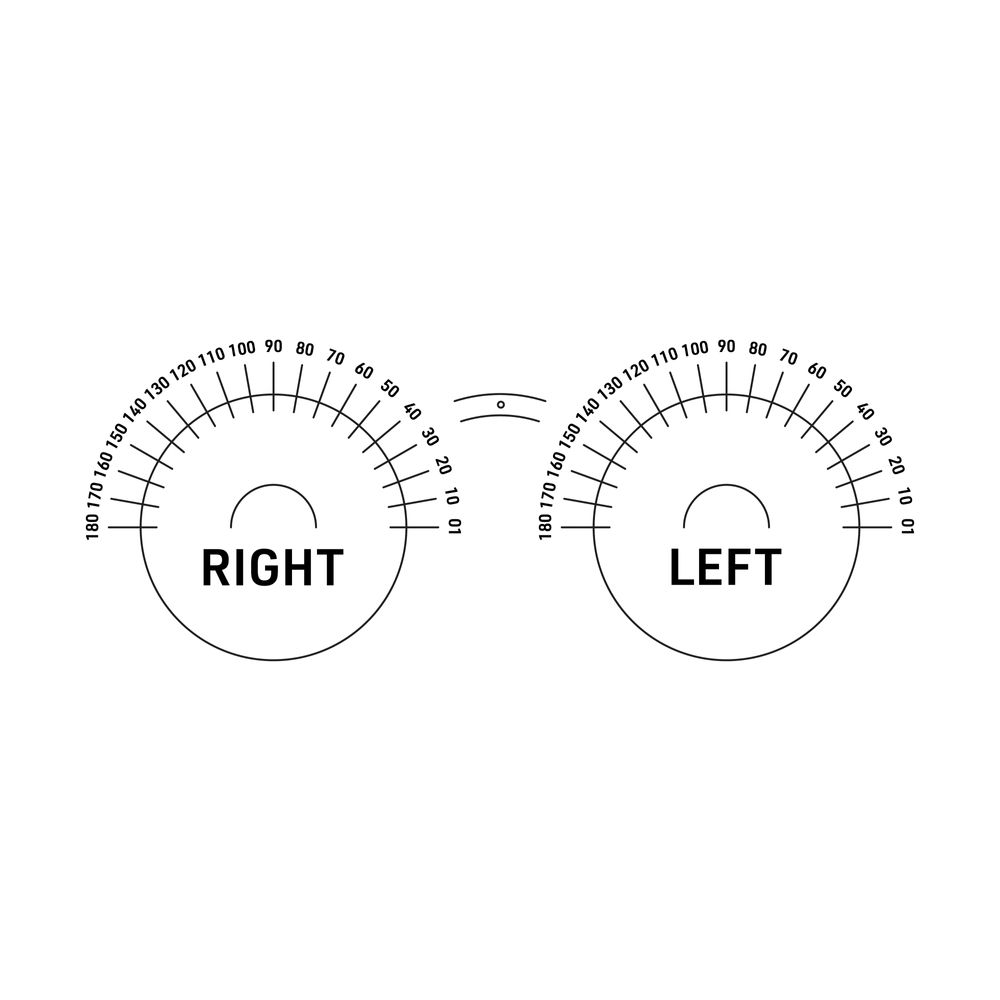
Having understood the profound benefits of choosing tailored prescription eyewear over generic readers, the next crucial step is to decipher the language of your eye prescription. This section will break down the various terms, numbers, and abbreviations you’ll encounter on a prescription for rx reading glasses in 2025, empowering you to comprehend the precise optical corrections designed for your unique visual needs. Understanding these details is key to ensuring your reading glasses provide optimal visual clarity and comfort.
Understanding Your Reading Glasses Prescription's Key Abbreviations
An eye prescription is a precise document detailing the specific lens powers required to correct your vision. Knowing the fundamental abbreviations is the first step to interpreting your reading glasses prescription.
OS vs. OD vs. OU: What each eye means on your Prescription Eyewear.
When you look at your prescription eyewear details, you’ll almost always see columns or sections labeled OD and OS. OD stands for “Oculus Dexter,” which is Latin for the right eye. OS stands for “Oculus Sinister,” meaning the left eye. Sometimes, you might also see OU, which means “Oculus Uterque,” or both eyes. This distinction is vital because it allows your eye care professional to prescribe different lens powers for each eye if your visual acuity or refractive errors vary between them. This level of customization is a hallmark of prescription reading glasses.
Diopter for reading: Measuring Lens Types power (positive vs. negative numbers).
The diopter (D) is the standard unit of measurement for the optical power of a lens. In the context of rx reading glasses, you will almost exclusively see positive numbers, such as +1.00, +2.50, or +3.00. These positive numbers indicate a magnifying lens used to correct farsightedness or, more commonly for reading glasses, presbyopia. The higher the diopter value, the stronger the magnification or focusing power the lens provides for near vision. This lens power is precisely calibrated to help your eyes focus on close-up text and objects.
How to read eye prescription for reading glasses.
A typical eye prescription for reading glasses will be laid out in a clear, often tabular, format. You’ll usually see rows for OD and OS, followed by columns for different lens parameters. Common columns include SPH (Sphere), CYL (Cylinder), Axis, and potentially ADD (Add Power) or Prism. Learning to identify these abbreviations and their corresponding numbers is essential for understanding how your prescription lenses are designed to provide optimal vision correction and alleviate eye strain for your close-up tasks. Each number represents a critical component of your unique vision solution.
The Core Components of Your Lens Power (SPH, CYL, Axis)
Beyond basic abbreviations, your eye prescription specifies the exact lens power needed using three primary components: Sphere, Cylinder, and Axis. These values determine the fundamental optical correction for your rx reading glasses.
SPH (Sphere): The main power of your Reading Glasses.
The SPH (Sphere) value on your prescription indicates the primary lens power required to correct your farsightedness or nearsightedness. For reading glasses, this number will almost always be positive (+) and represents the main magnification or focusing power needed for near vision. A spherical lens provides uniform power across its entire surface. This is the most fundamental component of your reading glasses prescription, ensuring that light focuses correctly on your retina when you are performing close-up tasks. This spherical correction directly impacts the clarity you experience.
CYL (Cylinder) and Axis: Correcting astigmatism with reading glasses.
If you have astigmatism, your eye prescription will include CYL (Cylinder) and Axis values. CYL denotes the specific amount of lens power needed to correct the blurred or distorted vision caused by an irregularly shaped cornea or lens. The Axis value (a number between 1 and 180 degrees) specifies the orientation or angle at which this cylindrical power should be placed in your lens to effectively neutralize your astigmatism. Without these values, non-prescription readers cannot address astigmatism, often leading to persistent eye strain and headaches. Rx reading glasses offer this crucial precise vision correction.
Understanding your reading glasses prescription.
To truly understand your reading glasses prescription, you must recognize that SPH, CYL, and Axis work in concert. The SPH provides the overall magnifying power for near vision. If CYL and Axis are present, they add a specific cylindrical power at a particular angle to correct astigmatism, ensuring that light focuses sharply at all meridians of your eye. This combination creates a customized lens designed to provide truly clear vision and reduce eye strain for all your reading and close-up activities. This tailored optical solution is what sets prescription reading glasses apart.
Advanced Elements: Add, Prism, and PD
While SPH, CYL, and Axis are core, some eye prescriptions for rx reading glasses may include additional elements like ADD, Prism, and PD, which further refine your vision correction for optimal comfort and clarity.
What is add power in prescription for multi-focal Lens Types.
The ADD power, or “Addition,” is a crucial value for multi-focal lens types such as bifocals or progressive lenses. This number, always positive, represents the additional magnifying power added to your distance prescription specifically for near vision (like reading). For dedicated single-vision rx reading glasses, the ADD power is typically already incorporated into the SPH value. However, for those needing vision correction for both distance and near in a single pair of glasses, the ADD power precisely defines the strength of the reading segment.
Prism correction for double vision (diplopia) and Vision Correction.
Prism correction is less common in reading glasses but can be included in your rx reading glasses prescription if you experience double vision (known as diplopia) or have certain eye alignment issues. Prism helps to redirect light before it enters your eye, ensuring that the image from each eye aligns correctly. This specialized vision correction helps your eyes work together more efficiently, relieving eye strain and discomfort and providing a single, clear image. If prescribed, prism will also have a base direction (e.g., BU for base up, BD for base down), indicating its orientation.
Pupillary Distance for reading glasses: Why PD is crucial for optimal clarity.
Your Pupillary Distance (PD) is the measurement in millimeters between the centers of your pupils. While often measured by your optician during the fitting process, it’s a critical component for rx reading glasses and is sometimes included on your prescription. The PD ensures that the optical center of each lens in your reading glasses aligns precisely with your pupils. If the lens centers don’t match your PD, it can induce prismatic effect and visual distortion, leading to eye strain, fatigue, and headaches, even if the lens power is correct. A customized PD is vital for optimal clarity and comfort in your prescription eyewear. For personalized rx reading glasses that are perfectly tailored to your unique pupillary distance and vision needs, ensuring every word is crisp and clear without eye strain, explore a wide selection of rx reading glasses.
【Choosing the Right Rx Reading Glasses: Lens Types & Features】
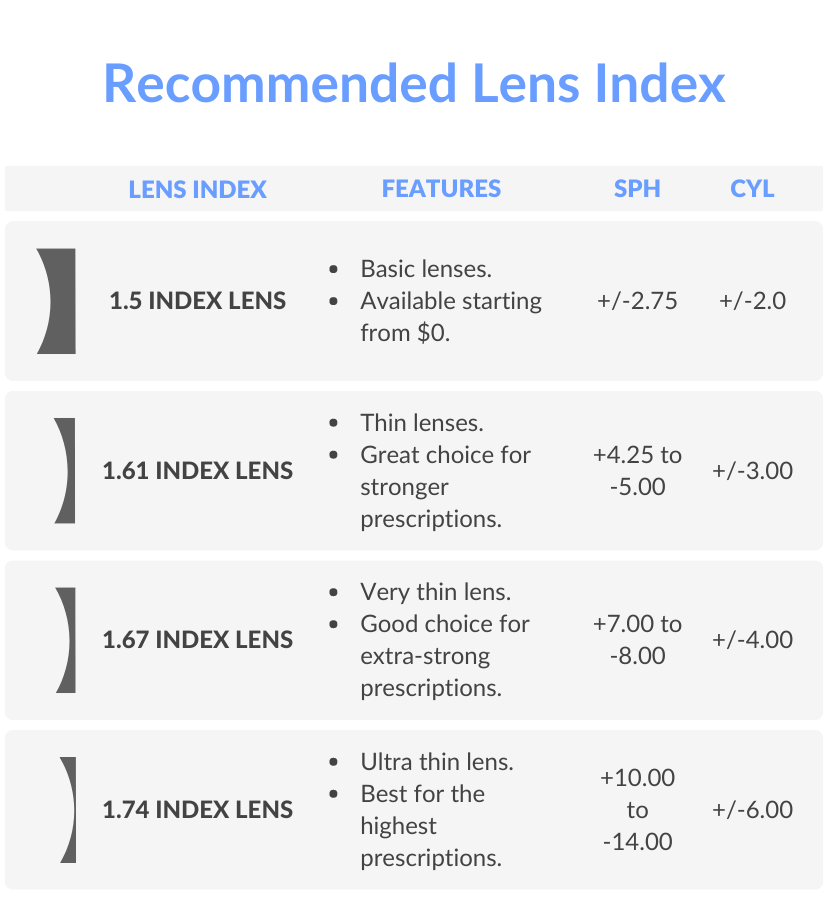
Having deciphered your eye prescription and understood its critical components, the journey to optimal vision clarity continues with selecting the ideal rx reading glasses. This section will guide you through the diverse lens types, advanced coatings, and essential frame considerations to ensure your prescription eyewear not only meets your visual needs but also offers maximum comfort and durability in 2025. Choosing the right features for your reading glasses is paramount for an unparalleled visual experience.
Navigating Lens Options: Single Vision vs. Bifocals vs. Progressives
The foundation of your rx reading glasses lies in the chosen lens type. Understanding the differences between single vision, bifocal, and progressive lenses is crucial for tailoring your reading aid to your specific daily activities and vision requirements.
Benefits of progressive reading glasses (PAL/Progressive Additional Lens).
Progressive Additional Lenses (PAL), often referred to simply as progressives, offer a revolutionary approach to multi-focal vision correction. Unlike traditional bifocals with a visible line, progressive reading glasses provide a seamless transition between multiple focal points. This means you can effortlessly shift your gaze from near vision (for reading a book), to intermediate vision (for computer screens), and even to distance vision (across a room) without the need to switch between multiple pairs of glasses. The key benefit is uninterrupted vision, significantly reducing eye strain and offering unmatched convenience for individuals with presbyopia who require vision correction at varying distances. These tailored reading aids adapt fluidly to your environment.
Bifocal vs progressive reading glasses: Understanding the visual transition.
The fundamental difference between bifocal and progressive reading glasses lies in their visual transition. Bifocal lenses feature two distinct vision zones—a larger section for distance correction and a clearly defined near vision segment at the bottom for reading. This separation is marked by a visible line, which some users find disruptive. The transition between these magnification zones is abrupt. In contrast, progressive lenses boast an invisible design with a gradient of lens power, providing a smooth, continuous transition from distance to intermediate to near vision. This seamless visual experience often requires an adaptation period, but once accustomed, it offers superior visual comfort and versatility compared to the distinct jump of bifocals. Both lens types offer effective vision correction, but the progressive option provides a more natural visual flow.
Computer glasses prescription: Specialized near vision correction options.
For individuals spending extensive hours in front of digital screens, a computer glasses prescription offers specialized near vision correction beyond standard reading glasses. These optically corrected readers are specifically designed to optimize intermediate vision, which is the typical distance to a computer monitor, tablet, or smartphone. By providing precise magnification at this specific range, computer glasses drastically reduce digital eye strain, neck pain, and fatigue often associated with extended screen time. Many computer vision solutions also incorporate blue light filters and anti-glare coatings to further enhance visual comfort and protect your eyes from harmful light emitted by devices. They are a dedicated task-specific lens for modern digital lifestyles.
Types of reading glasses lenses for diverse needs.
Choosing the right lens type for your rx reading glasses is about aligning the customized vision solution with your lifestyle. Whether you need single-vision lenses for dedicated reading tasks, bifocals for clear distance and near vision with a distinct segment, progressive lenses for seamless multi-focal adaptability, or specialized computer glasses to combat digital eye strain, there is a prescription lens designed for your unique diverse needs. Each lens type offers a particular visual experience and functional benefit. To explore a wide array of rx reading glasses tailored for your unique vision needs—whether you require single-vision clarity, multi-focal adaptability, or specialized computer vision solutions—ensuring optimal visual comfort and performance for all your daily tasks, click here: customized vision solution.
Enhancing Your Rx Reading Glasses with Coatings and Materials
Beyond the lens type, the choice of lens materials and protective coatings significantly impacts the performance, durability, and visual comfort of your rx reading glasses. These enhancements elevate your prescription eyewear from mere vision correction to a superior optical tool.
The advantages of anti-glare coating for reading glasses.
An anti-glare coating, also known as an anti-reflective coating, is an invaluable addition to any pair of reading glasses. This sophisticated lens treatment works by reducing the amount of light reflections off both the front and back surfaces of your lenses. The direct benefits are manifold: significantly reduced eye strain, especially when reading under bright lights, using digital screens, or driving at night. By eliminating distracting glare, anti-glare coating vastly improves visual clarity and contrast, making text appear sharper and colors more vibrant. Furthermore, it enhances the aesthetics of your prescription eyewear by making the lenses appear nearly invisible, allowing your eyes to be seen more clearly. It’s a key feature for enhanced visual comfort.
Lens materials for Prescription Eyewear: Polycarbonate, Trivex, and CR39.
The material of your rx reading glasses lenses plays a critical role in their durability, weight, thickness, and optical clarity.
CR39: This standard plasticlens materialoffers excellentoptical clarityand is generally the most affordable option. However, it is thicker and lessimpact-resistantthan other choices.Polycarbonate: Known for its exceptionalimpact resistance,polycarbonate lensesare ideal for safety glasses, children’seyewear, and active lifestyles. They are significantly thinner and lighter thanCR39, making them a comfortable choice, though they may have slightly lessoptical claritythanCR39orTrivex.Trivex: A newerlens material,Trivexcombines the best attributes ofCR39andpolycarbonate. It offers excellentoptical claritycomparable toCR39, along with the highimpact resistanceandlightweightproperties ofpolycarbonate. This makesTrivexa premium choice forprescription reading glasses, providing bothsafetyandsuperior vision.
Photochromic lenses for seamless light adaptation.
Photochromic lenses, often referred to as transition lenses, offer remarkable convenience by adapting their tint based on UV light exposure. Indoors, they remain clear, functioning as regular rx reading glasses. When you step outdoors, they automatically darken, effectively becoming sunglasses and providing UV protection. This seamless light adaptation eliminates the need to carry and switch between separate pairs of reading glasses and sunglasses, enhancing comfort and eye protection. They provide constant optical correction whether you’re reading on a sunny patio or working indoors, offering a truly versatile vision solution for changing light conditions.
Frame Styles and Practical Considerations for Reading Glasses
Beyond the lenses, the frame style and practical considerations are paramount for the comfort, fit, and longevity of your rx reading glasses. A well-chosen frame ensures your tailored reading aids remain securely and comfortably in place throughout your day.
Comfort and fit: Hydrophilic nose pads and anti-slip grips.
The comfort and fit of your reading glasses are crucial for all-day wear, preventing discomfort and distraction. Features like hydrophilic nose pads are designed to become slightly tacky when exposed to moisture (e.g., sweat), providing a more secure and stable fit that prevents slipping down your nose. Similarly, anti-slip grips on the temple tips help keep the frames firmly in place behind your ears, even during movement. These ergonomic design elements reduce pressure points and skin irritation, ensuring your prescription eyewear stays put without constant adjustments. A precise fit is fundamental for optimal visual clarity and avoiding eye strain caused by shifting lenses.
Durability and warranty: What to look for in quality Reading Glasses.
Investing in quality reading glasses means considering their durability and the accompanying warranty. Look for frames constructed from robust frame materials such as high-grade acetate, flexible titanium, or resilient stainless steel, which resist bending, breaking, and corrosion. Pay attention to the hinge construction; spring hinges, for example, offer greater flexibility and longevity, reducing the likelihood of breakage from daily use. A strong warranty from the manufacturer or retailer is a clear indicator of confidence in their product’s craftsmanship and durability. It provides peace of mind, ensuring your investment in rx reading glasses will provide lasting clarity and reliable performance for years to come. For rx reading glasses that blend superior optical performance with exceptional durability and comfort, ensuring your investment provides lasting clarity and style, discover our collection of world-class rx reading glasses.
【Where to Buy Rx Reading Glasses: Online vs. In-Person】
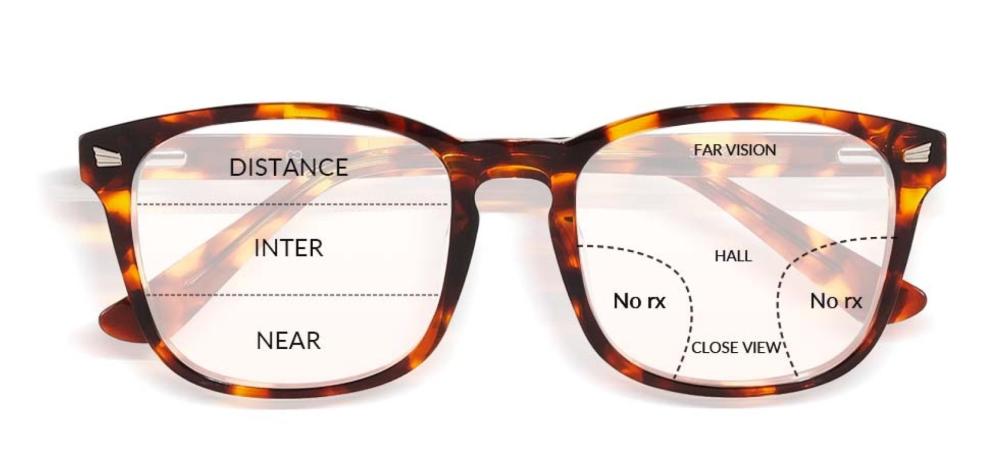
Having thoroughly explored the various lens types, coatings, and frame considerations to tailor your ideal rx reading glasses, the next crucial step is deciding where to purchase them. In 2025, consumers face a primary choice: the convenience of online optical retailers versus the personalized service of in-person opticians and brick-and-mortar stores. Each channel offers distinct advantages and potential drawbacks for securing your prescription eyewear, impacting everything from cost to fitting accuracy and overall visual comfort.
The Pros and Cons of Getting Prescription Reading Glasses Online
The digital age has revolutionized how we shop, extending to prescription eyewear. Purchasing reading glasses online can be an appealing option, offering convenience and often competitive pricing. However, this approach comes with its own set of considerations, especially regarding the complexity of your vision correction needs.
When online retailers are a “safe bet” for single vision Prescription Eyewear.
For those with simple prescriptions primarily needing single vision reading glasses—meaning correction for just one focal distance, typically near vision—online retailers can be an excellent and “safe bet.” If your prescription doesn’t include significant astigmatism or prism correction, and your Pupillary Distance (PD) is known, online eyewear providers offer a vast selection of frames and lens options at potentially lower price points. This channel is particularly convenient for re-ordering an existing pair or for individuals who are comfortable taking their own PD measurement and have a clear understanding of their prescription strength. The cost savings and doorstep delivery make it an attractive choice for straightforward reading aid requirements.
Potential challenges for complex prescriptions (e.g., astigmatism, progressives).
While online shopping excels for simple single vision lenses, it presents significant potential challenges for complex prescriptions. Astigmatism correction, for example, requires precise axis and cylinder measurements, which, if off by even a few degrees, can lead to distorted vision and eye strain. Similarly, progressive lenses (PALs) and bifocal lens types demand extremely accurate fitting height and optical center measurements to ensure a seamless visual transition between distance, intermediate, and near vision zones. Without the expert hand of an optician to take these crucial measurements and ensure proper frame fit on your face, online purchased progressive reading glasses can result in adaptation difficulties, peripheral distortion, or an uncomfortable visual experience. The lack of personalized fitting for these intricate prescription eyewear solutions often outweighs the initial cost savings.
Getting prescription reading glasses online: What to consider.
If you opt to purchase your prescription reading glasses online, several factors warrant careful consideration to ensure a successful outcome. First, always have an up-to-date and accurate eye prescription from a licensed optometrist. Second, accurately measure your Pupillary Distance (PD), as this is critical for lens centration; many online retailers provide guides, but errors can lead to discomfort. Third, scrutinize the retailer’s return policy and warranty terms; a generous return window allows for adjustments or exchanges if the fit or vision clarity isn’t perfect. Reading customer reviews can offer insights into the quality of their lenses and service. Lastly, leverage any virtual try-on tools they offer to gauge how frames might look on your face, though this doesn’t replace an actual physical try-on. For a diverse selection of rx reading glasses that cater to simple single vision needs with competitive pricing and clear lens options, ensuring your journey to improved near vision is straightforward and convenient, explore our range of convenient rx reading glasses.
The Value of In-Person Fittings and Optician Expertise
Despite the allure of online shopping, the traditional in-person fitting experience at an optical store or optometrist's office offers unparalleled advantages, especially for complex vision correction needs. The human element of optician expertise is often invaluable in achieving optimal visual clarity and comfort.
Why bifocal and progressive Lens Types often require in-person measurements.
Bifocal and, particularly, progressive lens types are sophisticated vision solutions that thrive on precise in-person measurements. The placement of the multi-focal zones within progressive lenses is highly dependent on factors like the distance between your pupils (PD), the fitting height (the vertical measurement from the bottom of the lens to the pupil center), and even the natural tilt of your head and the curvature of the frame on your face. An optician uses specialized tools and their trained eye to take these critical measurements accurately, ensuring that the seamless visual transition from distance to intermediate to near vision is precisely aligned with your natural gaze. This meticulous fitting process significantly reduces the adaptation period and prevents visual distortion or swim effect often associated with poorly fitted multi-focal eyewear. It’s about achieving truly uninterrupted vision.
The role of an optician vs. optometrist in fulfilling your Vision Correction needs.
Understanding the distinct roles of an optician and an optometrist is crucial for fulfilling your vision correction needs. An optometrist is a healthcare professional who performs comprehensive eye exams, diagnoses eye conditions, and writes prescriptions for vision correction. They are the ones who determine your prescription strength and type. An optician, on the other hand, is the eyewear specialist. They take your optometrist's prescription and guide you through the process of selecting the most appropriate frame styles and lens materials, taking precise measurements for a custom fit. They ensure your rx reading glasses are made to exact specifications, make adjustments for comfort, and troubleshoot any fitting issues. While an optometrist prescribes the vision solution, an optician expertly crafts and fits the actual prescription eyewear, ensuring optimal performance and visual comfort.
Evaluating Specific Rx Eyewear Providers and Their Offerings
When it comes to selecting a provider for your rx reading glasses, whether online or in-person, it’s wise to evaluate their specific offerings. Not all eyewear providers are created equal; their Rx ranges, available lens technologies, pricing structures, and warranty policies can vary significantly.
Comparison of Rx ranges and advanced Lens Types technologies (e.g., ChromaPop, Fototec).
Different Rx eyewear providers cater to varying prescription strengths and offer a range of advanced lens technologies. Some may specialize in high-index lenses for strong prescriptions, ensuring thinner and lighter eyewear. Others might partner with specific lens manufacturers to provide proprietary coatings or lens designs, such as Smith’s ChromaPop for enhanced color and clarity in sunglasses, or Fototec photochromic lenses for seamless light adaptation. It’s essential to inquire about the lens types they offer beyond the basics (e.g., specialized blue light filters, anti-fog coatings, sports-specific optics). A provider that offers a broader Rx range and access to cutting-edge lens technologies can provide a more customized vision solution for your unique lifestyle and visual demands.
Pricing and warranty considerations across different brands of Reading Glasses.
Finally, carefully compare the pricing and warranty policies across various brands of reading glasses and eyewear providers. Pricing structures can differ significantly; some offer bundled packages including frames, lenses, and coatings, while others itemize each component. Always inquire about the total cost before committing. Equally important is the warranty coverage. A reputable provider will offer a warranty on both the frames (covering defects in materials and craftsmanship) and the lenses (covering coating issues or prescription accuracy). Some even offer accidental damage protection for a limited period. Understanding the warranty provides peace of mind and protects your investment in your prescription eyewear. Don’t just chase the cheapest option; consider the overall value, customer service reputation, and the long-term durability of the rx reading glasses you choose. For a comprehensive selection of rx reading glasses that balance superior optical performance with diverse lens options, robust frame materials, and clear warranty information, ensuring you find the perfect pair to meet your vision correction needs for 2025, explore our collection: rx reading glasses.
【Adjusting to Your New Rx Reading Glasses & Beyond】
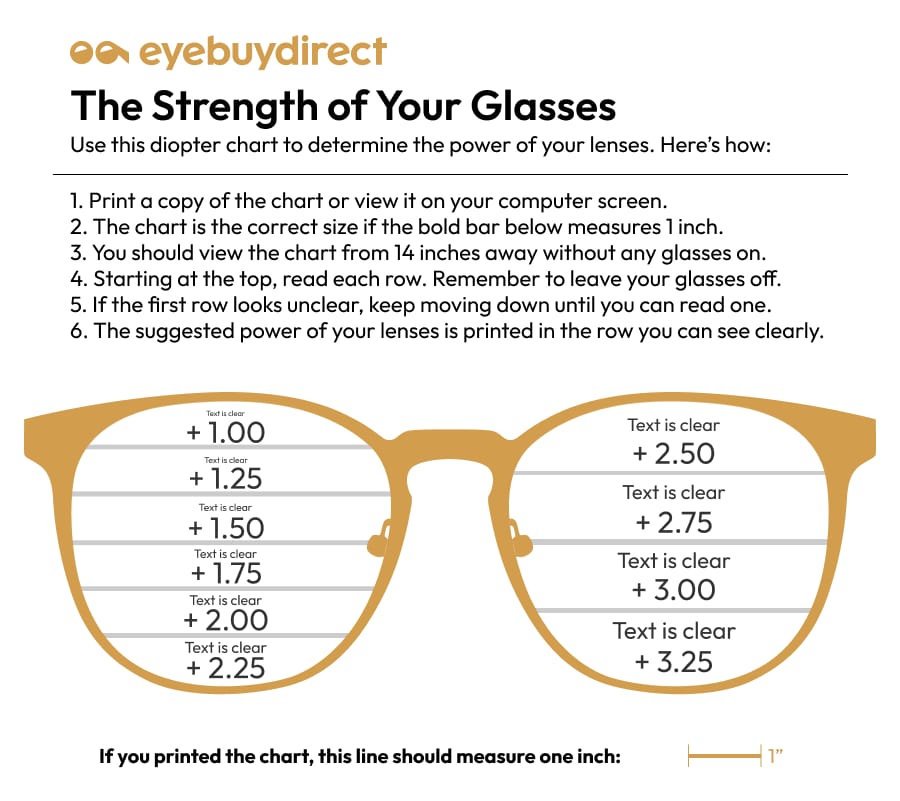
Having found the perfect pair of rx reading glasses, understanding how to adjust to them and maintain your vision health is crucial for long-term visual comfort and clarity. This final section guides you through the initial adaptation phase, emphasizes the importance of regular eye examinations, and offers practical advice for eyewear care.
The Adjustment Period for New Prescription Eyewear
Receiving new prescription eyewear, especially if your prescription strength has changed significantly or if you’re transitioning to a different lens type, often comes with an adjustment period. Your brain needs time to adapt to the new optical information it’s receiving. Patience is key during this phase to ensure optimal visual comfort and a successful transition.
What to expect when adjusting to progressive reading glasses.
Adjusting to progressive reading glasses can be a unique experience compared to single vision lenses. Progressive lenses feature multiple focal zones—for distance, intermediate, and near vision—blended seamlessly into one lens. This design requires your eyes and brain to learn how to navigate these zones. Initially, you might notice peripheral distortion or a “swim” effect, especially when moving your head rapidly. The key is to learn to move your head to point your nose at what you want to see, rather than just moving your eyes, ensuring you’re looking through the correct focal area. Most people adapt within a few days to a couple of weeks, finding the sweet spot for various tasks like reading, computer work, and driving. Consistency in wearing your new multi-focal lenses helps expedite this adaptation process.
Common initial feelings: headaches or dizziness from new Reading Glasses.
It’s quite common to experience mild headaches or a sensation of dizziness when first wearing new reading glasses or prescription eyewear. This is typically a normal response as your visual system recalibrates to the updated lens power and optical center. Your brain is working hard to process the new visual input, and this cognitive effort can lead to temporary eye strain or discomfort. If you’ve upgraded from over-the-counter readers to prescription strength reading glasses, the precision of the new lenses might also feel unfamiliar at first. These symptoms usually subside within a few days as your eyes and brain habituate to the new prescription. If headaches or dizziness persist beyond two weeks, or if you experience significant visual distortion, it’s advisable to consult your optician or optometrist to verify the prescription accuracy and frame fit.
Maintaining Your Vision Health: Prescription Expiration and Eye Exams
Your vision correction needs are not static; they evolve over time, especially as you age. Therefore, maintaining your vision health involves more than just having the right rx reading glasses; it also means regular eye check-ups to ensure your prescription remains accurate and to monitor for any underlying eye conditions.
Why an eye exam for presbyopia is recommended every two years.
For adults, particularly those experiencing presbyopia—the natural hardening of the eye’s lens that impairs near vision with age—an eye exam is generally recommended every two years. Presbyopia is a progressive condition, meaning your near vision prescription will likely change over time to accommodate the ongoing decrease in your eye’s focusing ability. Regular eye examinations in 2025 ensure that your prescription strength for reading glasses is current and effective, preventing eye strain and maximizing visual clarity for daily tasks. These comprehensive exams also allow your optometrist to detect early signs of other ocular health issues, such as glaucoma, cataracts, or macular degeneration, long before they impact your vision. Proactive vision care is essential for long-term eye health.
Increased frequency of exams for underlying health conditions.
While a bi-annual eye exam is a good general guideline, individuals with certain underlying health conditions may require more frequent eye examinations. For example, people with diabetes are at higher risk for diabetic retinopathy, a condition that can lead to vision loss if not monitored and treated. Hypertension (high blood pressure) can also affect the blood vessels in the eyes. Those with a family history of glaucoma or macular degeneration should also schedule more regular check-ups, often annually. Your optometrist or ophthalmologist will advise on the appropriate frequency of eye exams based on your personal health history, risk factors, and specific vision correction needs. This proactive approach to eye health can safeguard your eyesight against potentially debilitating conditions.
Tips for Optimal Care and Usage of Your Reading Glasses
Once you’ve settled into your new rx reading glasses, proper care and usage are essential to protect your investment and ensure their longevity and optimal performance. A few simple habits can significantly extend the life of your prescription eyewear and keep your lenses clear.
Protecting your lenses from scratches and ensuring longevity of your Prescription Eyewear.
Scratches are the most common form of damage to eyeglass lenses, and they can significantly impair visual clarity. To protect your lenses and ensure the longevity of your prescription eyewear, always clean them with a microfiber cloth and a specialized lens cleaning solution or plain water. Avoid using paper towels, clothing, or harsh household cleaners, as these can scratch coatings or the lens material itself. When not wearing your rx reading glasses, store them in a protective eyeglass case to prevent accidental damage. Never place them lens-down on any surface. Investing in scratch-resistant coatings is a wise choice for added durability. By following these simple care tips, your reading aid will continue to provide crisp, clear vision for years. For a diverse selection of rx reading glasses designed for durability and featuring various lens protection options, ensuring your eyewear stands the test of time, explore our collection of long-lasting rx reading glasses.
When to consult your healthcare team for vision concerns.
While minor eye strain or discomfort might be part of adapting to new reading glasses, certain vision concerns warrant immediate consultation with your healthcare team or eye health specialist. These include: sudden vision changes, such as a noticeable decrease in visual acuity or blurry vision in one eye; new or dramatically increased floaters or flashes of light in your field of vision; eye pain or persistent redness; double vision; or any significant peripheral vision loss. These symptoms could indicate serious eye conditions or underlying health issues that require prompt diagnosis and treatment. Do not self-diagnose or delay seeking professional medical advice for these urgent vision concerns. Your optometrist or ophthalmologist can accurately assess your situation and provide the necessary care to preserve your eyesight.
Near vision correction options: Beyond your current Rx reading glasses.
While Rx reading glasses are an excellent and widely used solution for presbyopia and near vision correction, it’s worth knowing that other vision solutions exist for reading aid. For example, some individuals explore multi-focal contact lenses, which provide different lens powers for various distances, offering a glasses-free alternative for improved near and distance vision. Refractive surgery options, such as monovision LASIK or Refractive Lens Exchange (RLE), can also be considered for permanent vision correction, though these involve surgical procedures and specific criteria. Emerging ophthalmic technologies continue to broaden the scope of near vision solutions. Discussing these alternative options with your optometrist can help you determine the most suitable approach for your lifestyle and visual demands as your vision needs evolve in 2025. For a comprehensive range of rx reading glasses that provide excellent near vision correction, catering to diverse prescription needs and style preferences, ensuring clear sight for reading and close-up tasks, visit our collection: rx reading glasses.
Elevating Your Vision: The Lasting Value of Custom RX Reading Glasses
As we’ve explored, RX reading glasses are far more than simple magnifiers; they represent a precise, personalized investment in your eye health and daily comfort. Unlike generic, over-the-counter readers that offer a one-size-fits-all approach, prescription reading glasses are meticulously tailored to your unique vision correction needs, addressing conditions like presbyopia and astigmatism with unparalleled accuracy.
The indisputable benefits of choosing custom reading glasses are profound: dramatically enhanced visual clarity, significantly reduced eye strain, and lasting comfort during prolonged near vision tasks. This precision not only makes reading and digital work more enjoyable but also plays a pivotal role in supporting your long-term optical care by preventing chronic eye fatigue and potential vision issues.
The foundation of acquiring your ideal RX reading glasses lies in a comprehensive eye exam. A professional optometrist consultation is essential to accurately determine your reading glasses strength, decode your prescription (understanding SPH, CYL, Axis, and PD), and rule out any underlying eye conditions. This ensures your prescription eyewear is a true customized vision solution.
Further enhancing your RX reading glasses experience are advanced lens technologies and coatings. From single vision lenses for dedicated close work to progressive lenses that offer seamless vision zones for all distances, the choice of lens type caters to diverse lifestyles. Moreover, blue light filtering and anti-glare coatings provide crucial digital eye strain solutions, while high-index and Trivex lenses offer thinner, lighter, and more durable options.
When purchasing, you have options: the convenience and value of online retailers for simple prescriptions or the personalized service and expert fitting of traditional optical care stores for complex prescriptions like progressives. Understanding the factors influencing price and quality and leveraging discounts and warranties are key to maximizing value.
Finally, remember that adjusting to new prescription eyewear, especially progressive lenses, is a normal process, with mild headaches or dizziness often subsiding quickly. Regular eye exams every two years (or more frequently for underlying health conditions) are paramount to maintaining an accurate prescription and proactively safeguarding your vision health. Proper eyewear care, including protecting lenses from scratches, ensures the longevity of your investment.
By choosing tailored prescription eyewear, you’re not just correcting your vision; you’re investing in a lifetime of clear, comfortable sight. For superior RX reading glasses that blend precision, comfort, and advanced technology to meet your unique needs, explore our collection at Mozaer. Find your perfect pair and experience the difference of truly customized vision correction today: https://www.mozaer.com/search?q=rx reading glasses.

Leave a Reply